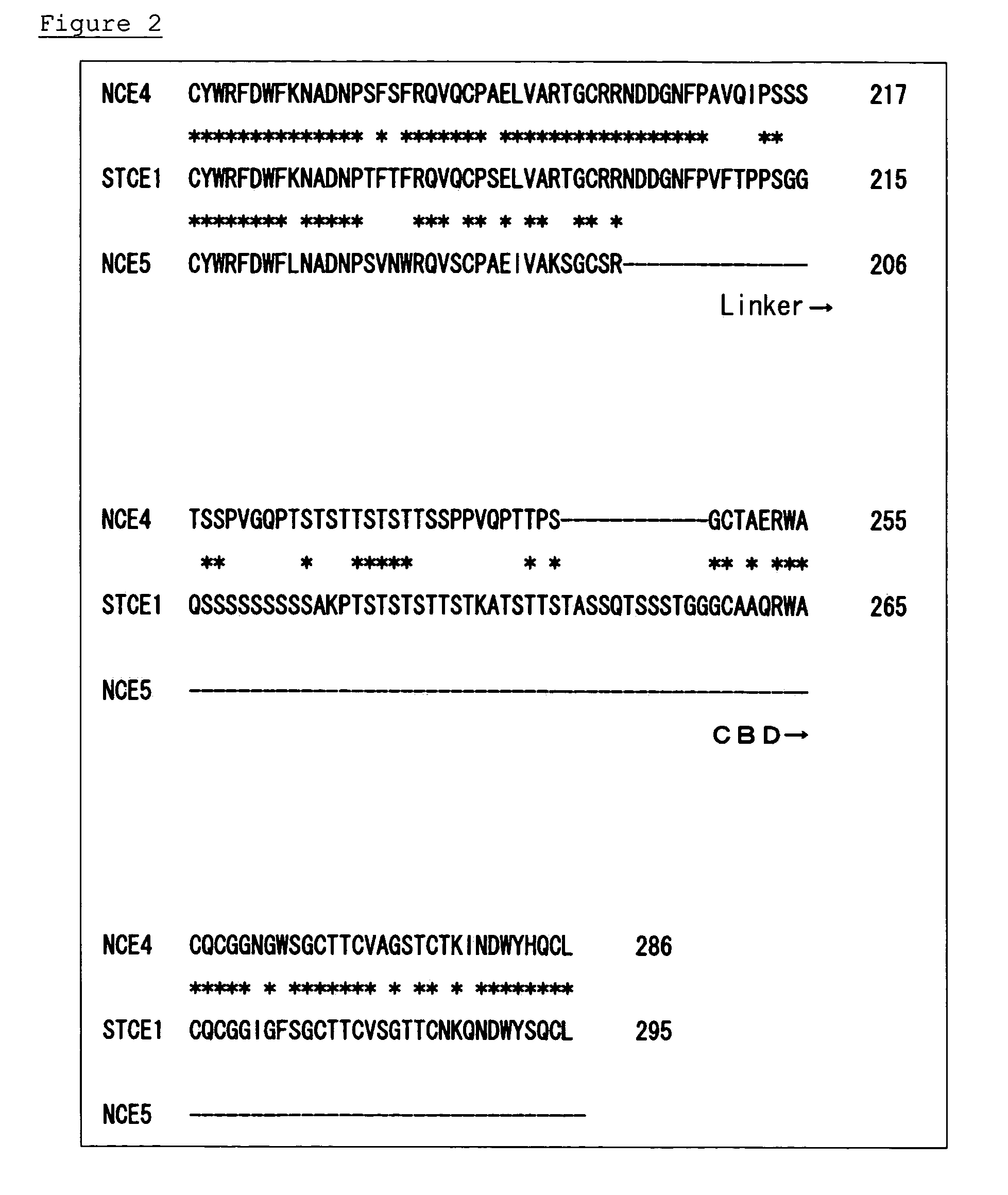Surfactant tolerant cellulase and method for modification thereof
a cellulase and surfactant technology, applied in the field of surfactant tolerant cellulase and method for modification thereof, can solve the problems of reduced activity and achieve the effect of small reduction in the presence of surfactant and efficient production of novel cellulas
- Summary
- Abstract
- Description
- Claims
- Application Information
AI Technical Summary
Benefits of technology
Problems solved by technology
Method used
Image
Examples
examples
[0122]The present invention now will be further illustrated by, but is by no means limited to, the following Examples.
example a1
Construction of Expression Vectors for Expressing N-Terminus-Modified Cellulase and Wild-Type Cellulase in Humicola insolens
(1) Construction of Expression Vector pMKD01 for Expressing N-Terminus-Modified Cellulase
[0123]Plasmid pUC118 (Takara Bio) was digested with BamHI. The resulting fragment was blunted with a DNA blunting kit (Takara Bio), and self-ligated with a DNA ligation kit (Takara Bio) to obtain pUC118-BN. The pUC118-BN was digested with SphI, blunted, and self-ligated to obtain pUC118BSN. Next, a 3.4-kb PstI-XbaI fragment comprising the cellulase NCE2 gene was obtained from Humicola insolens MN200-1 (FERM BP-5977) in accordance with the method described in Japanese Unexamined Patent Publication (Kokai) No. 8-126492. The fragment was ligated with pUC118BSN previously digested with the same restriction enzyme to obtain pUC118BSN-PX. Site-directed mutation was introduced into pUC118BSN-PX with a Sculptor in vitro mutagenesis system (Amersham Bioscience) to obtain plasmid pM...
example a2
Construction of Expression Vectors for Expressing Wild-Type NCE4 and N-Terminus-Modified NCE4, Transformation of Humicola insolens Therewith, and Evaluation of Activities
(1) Construction of Expression Vectors
[0133]As an expression vector for wild-type NCE4, the coding region of the NCE4 gene was ligated with pJD01 obtained in Example A1(2) to construct pN2EX-N4.
[0134]First, the coding region of the NCE4 gene was amplified by carrying out PCR using genomic DNA from Humicola insolens MN200-1 as a template and NCE4-Ne and NCE4-Ce as primers. The resulting PCR product of approximately 0.9 kbp was digested with BamHI, and ligated with pJD01 previously digested with the same restriction enzyme to construct pN2EX-N4.
[0135]
(SEQ NO: 15)NCE4-Ne: 5′-GGGGGGATCCTGGGACAAGATCCGTTCCTCCCCTCTC-3′(SEQ NO: 16)NCE4-Ce: 5′-GGGGGGATCCCTGCGTTTACAGGCACTGATGG-3′
[0136]As an expression vector for N-terminus-modified NCE4, the coding region of the mature protein in which the signal sequence for secretion was de...
PUM
| Property | Measurement | Unit |
|---|---|---|
| temperature | aaaaa | aaaaa |
| height | aaaaa | aaaaa |
| color | aaaaa | aaaaa |
Abstract
Description
Claims
Application Information
 Login to View More
Login to View More - R&D
- Intellectual Property
- Life Sciences
- Materials
- Tech Scout
- Unparalleled Data Quality
- Higher Quality Content
- 60% Fewer Hallucinations
Browse by: Latest US Patents, China's latest patents, Technical Efficacy Thesaurus, Application Domain, Technology Topic, Popular Technical Reports.
© 2025 PatSnap. All rights reserved.Legal|Privacy policy|Modern Slavery Act Transparency Statement|Sitemap|About US| Contact US: help@patsnap.com


